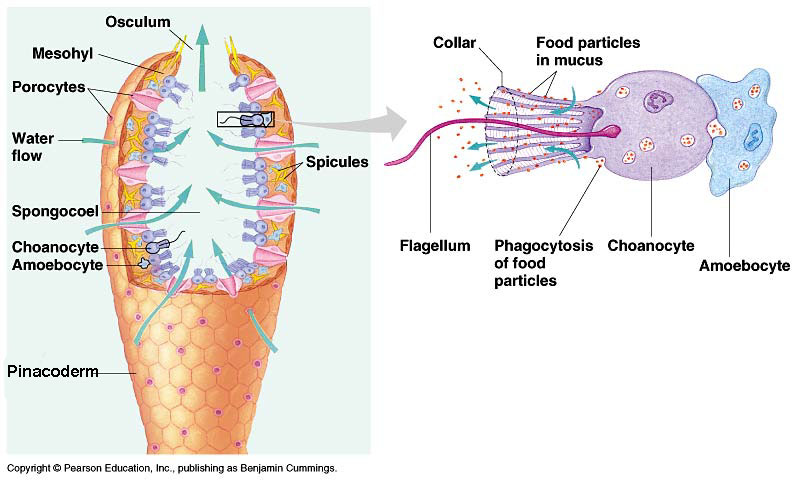By: Taylor, Ryan, Connor
Pretty Porifera and Crazy Cnidarians

Porifera and Cnidarians are both invertebrates.
An invertebrate is a animal without a backbone.
A snail does not have a back
bone therefore it is an invertebrate . Figure 1.
Porifera: an animal phylum comprising the sponges.
Cnidarians: any invertebrate animal, and is considered to belong to the phylum cnidria, characterized by the specialized stinging structures in the tentacles surrounding the mouth, a coelenterate.

A jellyfish does not have a backbone. So it is a invertabrate. Figue 2.
Cnidarians are the simplest organisms that have attained tissue level of organization.
Cnidarians can have one of two basic shapes: polypoid or medusoid.
Porifera and cnidarian facts:
1. Porifera are divided into three different groups. Glass Sponges, calcareous sponges, and demo sponges. Sponges can be radially symmetric or asymmetric and come in varieting colors, sizes, and shapes such as fan shaped, tree shaped, cup shaped, shapeless, ball shaped, and many others.
2. Porifera contains all the species of sponges. Porifera is most closely related to Protista, making it the first animal phylum to have evolved to be multicellular. This also makes Porifera the simplest in form and function. Sponges came alive 550 million years ago in the pre-Cambrian period, evolving from colonial protists, groups of identical single cell organisms that live together. Evidence for this comes from specialized cells called choanocytes which sponges use in feeding. Although sponges are made up of many cells with specialized functions, their cells are not organized into true tissues. This lack of true tissue layers makes sponges different from all other animals except protozoans, which are not multicellular. Sponges also lack symmetry, true organs, a digestive or respiratory system, a nervous system, muscles, and a true mouth.
3. Cnidarians kill their prey by shooting a barb wire at them to paralyze them, or even kill them. Then they bring the prey into their mouth/anus. Thats how they provide food for themselves and to help them survive.
4.Sponges lack organs and tissue, and all the cells are independent.
5. Types of porifera include phylum, coral, sponges, jellyfish, hydras, anemones, and many more
Here are some diagrams




This is a porifera diagram.
Questions:
1. Is porifera and cnidarians invertebrates or vertebrates?
2. How do cnidarians kill their prey?
3. What are the three types of porifera?
4. Give three different examples of types of cnidarians and porifera.
5. What do sponges lack?
6. What are the two basic shapes of a cnidarian?
7. How do sponges filter water?
8. What era did the sponges evolve from?

Some YouTube videos:
http://www.youtube.com/watch?v=8fy7iutY5Mc
http://www.youtube.com/watch?v=6PCFcBaquhk&feature=related
Bibliography:
http://sci.gallaudet.edu/ellsworth/2004/nancyha/snail.jpg. Figure 1.
http://www.mbgnet.net/salt/oceans/animals/cnidar.htm. Figure 2
http://dictionary.reference.com/browse/cnidarians
http://answers.yahoo.com/question/index?qid=20090519092649AAt30xd
http://users.tamuk.edu/kfjab02/Biology/BIOLOGY%20II/Taxa/b1313_ch18.htm
http://www.mbgnet.net/salt/animals/1anem.jpg
Comments (0)
You don't have permission to comment on this page.